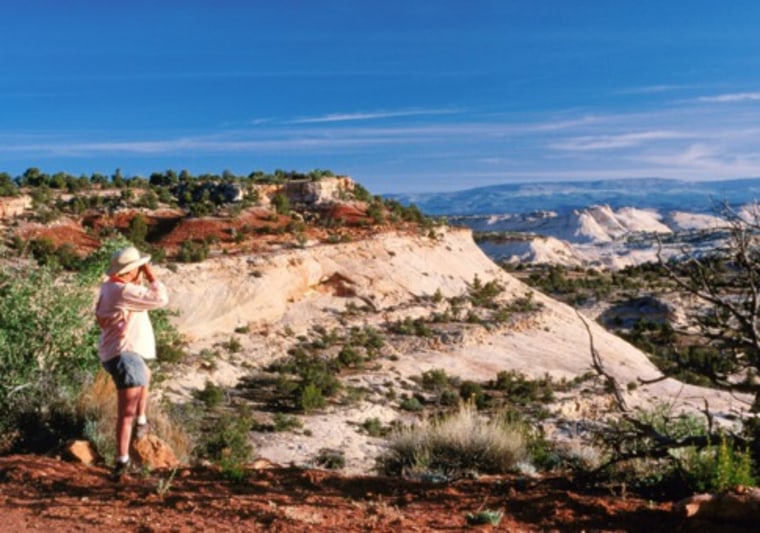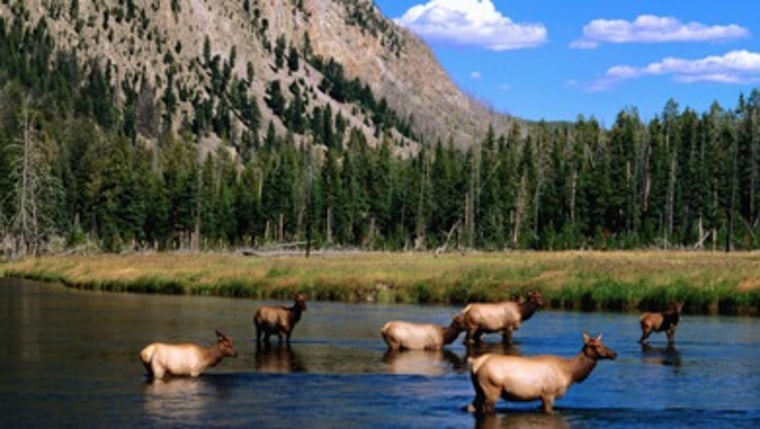Deep in the backcountry of the Everglades National Park — which the writer Marjory Stoneman Douglas called "the river of grass" — I felt a sense of complete isolation from the modern world. "It makes you feel free, doesn't it?" said my fishing guide, Steve Huff. Indeed it does.
At first, as I gazed at the beguiling maze of knotty mangroves, the big sky and the constantly moving water in this 1.5 million-acre park, I felt disoriented. I had no bearings, no BlackBerry, no computer, no iPad, no Twitter. But after just five minutes of being miles away from "civilization," I realized that this isolation and the freedom that comes with it was why I had come here in the first place. Sometimes we have to disconnect from the world in order to connect with ourselves. And there's no better place to do that than the American wilderness.
"There are no words that can tell the hidden spirit of the wilderness, that can reveal its mystery, its melancholy and its charm," wrote our 26th president, Theodore Roosevelt, a noted lover of the wilderness.
He's right, of course. The wilderness experience is very much an individual one. So what we've decided to do here instead is just point you in the right direction, to the places where you can discover for yourself the mystery and the charm of this country's wildest locations, where you can leave behind modern conveniences and, by foot, bicycle, watercraft or horseback, enter the world as it once was and may forever be.

We have spent time in many of these places. But in order to fill out our list, we reached out to the , which works to protect the nation's 635 million acres of public lands, to give us a hand. "It's still possible in America to escape the rat race. Our wilderness provides not only peace and quiet and world-class recreation," says William H. Meadows, president of The Wilderness Society. "We need to protect more of our wilderness, and we are working on bipartisan legislation in Congress to achieve that."
When many think of Yellowstone, they envision long roads packed with gawking tourists. Although it's one of America's most-visited national parks, Yellowstone still offers some of the best — if not the best — wilderness experiences in the country. Book a six-day pack trip to the Thorofare through , and experience the geysers, rivers, moose, elk and mountain goats in the most remote spot in one of the great public parks the world.
To the south, you'll find the Grand Staircase-Escalante National Monument. One of the youngest (1996) federal public land projects, Grand Staircase is truly an awe-inspiring place. Regal cream and rose-colored cliffs soar over plateaus. Dinosaur fossils from 75 million years ago have been discovered here. Mountain biking and horseback riding are two popular ways to access the national monument. But hiking works just fine, too. Utah Wilderness Society Director Julie Mack says it was the last place in the Lower 48 to be mapped.
Farther west is the John Muir Trail, named after the intrepid explorer and writer. On the 211-mile-long trail, you can walk from Yosemite to Mount Whitney, and gaze up at 14,000-foot peaks, and down at California's Central Valley. You'll run across mule deer and marmots. Don't forget to stop and smell the flowers, especially the blue lupine and bright red Indian paintbrush. stop at Evolution Lake, which California Wilderness Society representative Sally Miller calls "one of the most beautiful places in the Sierra."
It's possible to find wilderness in the middle of the country, too, in Minnesota's Boundary Waters Canoe Area Wilderness. In the "land of 1,000 lakes," there are none more remote and beautiful than those found in the Boundary Waters. The wilderness area has 1,000 miles of canoe trails (be prepared to portage a bit) that wind through the northern woods and connect to more than 2,000 backcountry camping sites. Be sure to bring your fishing rod: The lakes are loaded with bass, pike and walleye.
True wilderness is even found in the crowded northeast. The Maine Woods is not public land, but a group wants to . The collection of spruce and birch-covered land is owned by timber companies and billionaire John Malone, who have a longstanding tradition of allowing use by campers and outdoor sportsmen. This was one of Thoreau's favorite places. Ireland Pond is a secluded spot where you'll find mosses, deer, bobcat and the haunting call of the loon.
Ready to get out there? We are.
